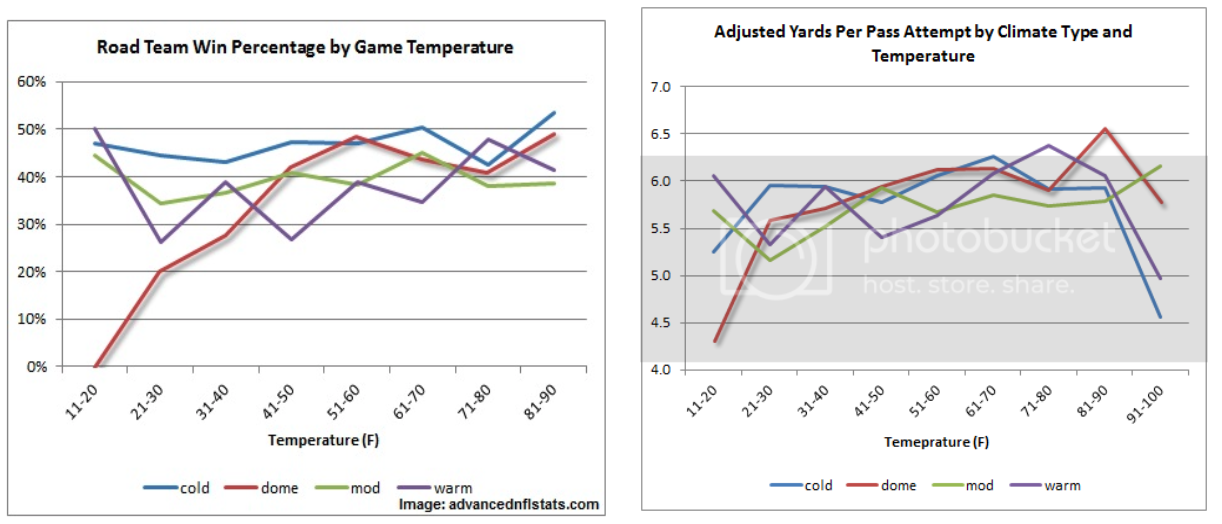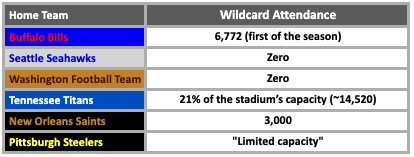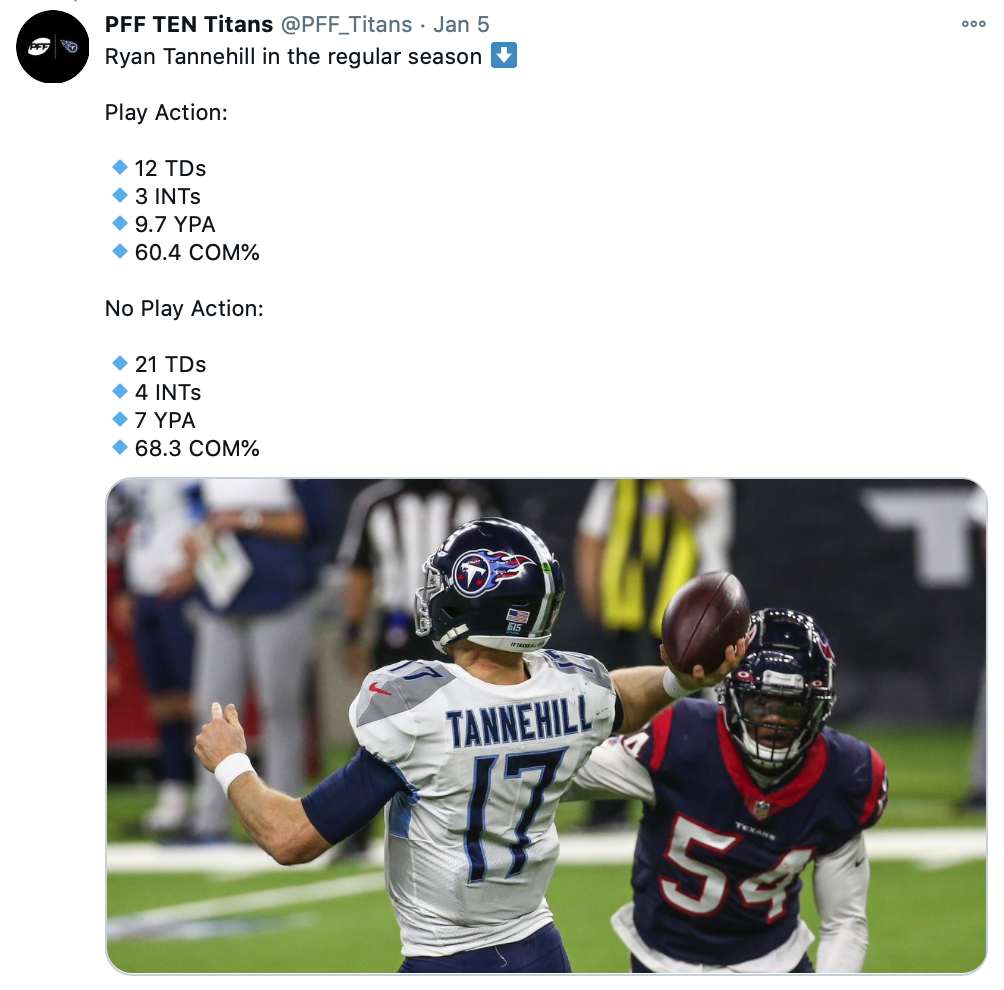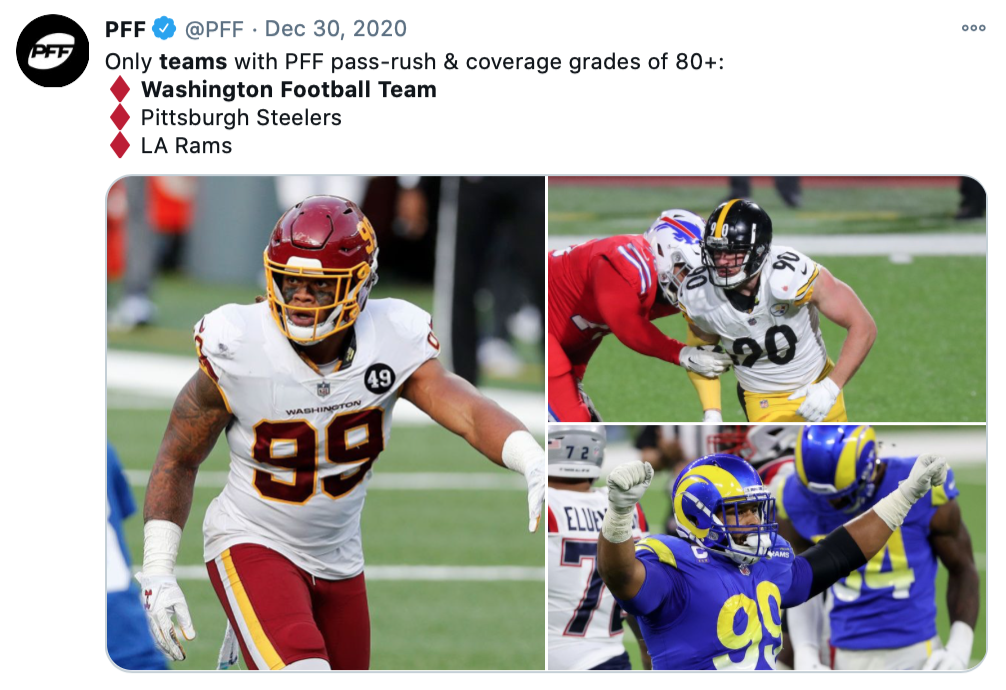Hey there. If you weren’t already aware, you’re reading Part-1 of a 4-Part breakdown on this week’s Wildcard Weekend DFS slate. In this article, we’ll be breaking down all relevant QBs, after already covering RBs, WRs, and TEs.
We have an exciting collection of teams featuring the best-of-the-best facing off in the Wildcard Round of the playoffs. Follow along as we examine each positional grouping for each team to identify the DFS value/upside on both DraftKings and FanDuel. Below is a breakdown of the QB position.
Before we dig too deep into the specifics, it’s important that we factor the following:
On a typical full-game slate, you would normally want to feel comfortable with most rostered players. That would even extend to punt-plays who would normally offer tremendous upside. On shorter slates – six games, 12 teams, it’s sometimes necessary to roster individuals we would normally avoid in order to pay up for studs elsewhere.
It’s also very important to consider late-swap strategies on these smaller slates. If you have any tournament lineups that, after a bad game or two, seem unlikely to cash, you have nothing to lose, and everything to gain by adding exposure to some riskier, lower-owned players.
Note: All numbers in parentheses refer to a player’s salary rank on each site.
Matchups (Vegas): The games offering the highest stacking upside are Baltimore at Tennessee and Indianapolis at Buffalo. With only three points separating the two inter-conference rivals, the fireworks should be set for ignition on Nissan Field come Sunday afternoon with an implied total of 55 points. The Titans currently find themselves as three-point home dogs in spite of Ryan Tannehill handing the Ravens crushing defeats in the Divisional Round last season (28-12), and earlier this season 30-24 in overtime.
A little over 700 miles away in Orchard Park, Buffalo is currently riding a six-game winning streak thanks to a truly breakout season from Josh Allen. Vegas is currently giving the Colts 6.5 points on the road, but we should never count out the defensive mastermind that is Matt Eberflus in finding ways to contain the explosive Buffalo offense. Nevertheless, a current implied total of 51 points provides plenty of reasons to highlight this game.
Matchups (Weather): Only three-of-14 playoff teams (Colts, Rams, and Saints) play in a domed or retractable stadium. That’s a significant, often overlooked factor for these January playoff games. Since it’s not the purpose of this edition, I’ll only state that, as the temperatures drop, RBs actually experience an increase in efficiency. The same cannot be said of passing games. The following chart provides the stadium type and average January temperature for each playoff team:
From my research, the external factor impacting QB production the most is wind speed of 12-15 MPH-or-more. But a dramatic shift in climate on the road is not that far behind. Temperature extremes at both ends of the spectrum are such a tremendous factor that even Aaron Rodgers, THE King in the North, is hit with a level of drop-off in efficiency. It just has nothing close to the effect on Rodgers as it does on passing offenses that have established their homes in warm-weather states. The following charts from AdvancedNFLStats.com provide us with some evidence:
The results are obvious. The teams experiencing the most substantial impact from playing in cold weather are those traveling in from moderate- and warm-weather states, and from playing under domes. When we get to temperatures below 25 degrees, the sample is so small that the data is unreliable.
And these findings are not limited to this study. Results have been uniform across all of the research I’ve uncovered. As temperatures drop below 40 degrees, QB efficiency drops at an exponential rate on visiting teams from moderate- and warm-weather states, and those playing in domed stadiums. Overall pass attempts decline, yes, but passing YPA, and yardage also follow closely behind. I mentioned Rodgers as THE King in the North. Hey, I admire Tom Brady just as much as any New England fanboy around. The feeling should be universal. But you might be shocked to learn that Brady has seen a significant decline in cold weather efficiency during his latter years.
As for the Why of it all, former Dallas and Miami HC Jimmy Johnson – born in Texas, attended HS in Louisiana, and matriculated at the University of Arkansas – was quoted as saying: “I remember being on the sideline in winter in the Meadowlands and it was so cold I didn't know what down it was, much less what play to use.” If you’d prefer scientific evidence, thisstudy found that both moderate and extreme reductions in ambient temperature during winter sports settings led to decrements in memory, vigilance, reaction time, and decision making. And, very important for our purposes, a reduction in cold stress from acclimation or acclimatization should in theory limit shivering and thermal discomfort and thus potentially limit the level of distraction and thus may positively influence cognitive function.
Matchups (Pass Rush): The Steelers, by a significant margin, have been the most dangerous pass rush this season. They have registered over 23 QB pressures per game led by T.J. Watt, Stephon Tuitt, and Bud Dupree. While they’ve also missed tackles at a bottom-five rate, the loss of Dupree to an ACL tear happened to directly coincide with their current 1-4 decline after an 11-0 start.
Prior to losing Dupree, Pittsburgh led the NFL in sack (3.54/game) and pressure rate (24.3). Since losing Dupree, their sack rate has declined by 15 percent, and pressures by 20 percent. His loss has also been a detriment to their run defense. The Steelers have granted a 25 percent increase in FPG to opposing backfields since losing Dupree. Facing arguably the top overall offensive line in the league from Cleveland could present an issue.
Los Angeles, Washington, New Orleans, Buffalo, Chicago, and Tampa Bay each rank within the top-10 pass rushes for 2020. On paper, the Saints and Rams should have little issue pressuring the pocket facing the porous O-lines of the Bears and Seahawks, respectively. Baltimore’s and Los Angeles’ O-lines should be able to provide ample protection to their QBs facing the pathetic pass rushes of Tennessee and Seattle, respectively. The most even matchups will be (O-line/D-line): Cleveland/Pittsburgh, Steelers/Browns, and Washington/Tampa Bay.
Matchup (Home vs. Away): In year’s past, home/road splits played a significant role during the playoffs. The climate at home locales has obviously already been covered. However, the absence/limitation of fan attendance mostly eliminates that portion of the home field advantage. Here is a breakdown of the fan attendance during Wildcard weekend:
Depending on the number of fans fitting within the “limited capacity” definition for the Steelers, they could join the Titans as teams with the most significant in-stadium support. Pittsburgh is 5-3 at home – all three losses in the last four weeks, 7-1 on the road, while Tennessee is 5-3 at Nissan Stadium, and 6-2 away from home.
TL:DR: Evidence tells us to beware of Tom Brady and Philip Rivers playing on the road in forecasted freezing conditions. Ryan Tannehill offers us the most significant value on DK, Josh Allen on FD.
Expose: Josh Allen, Ryan Tannehill, Jared Goff
On the Fence: Lamar Jackson, Baker Mayfield
Fade: Tom Brady, Russell Wilson, Drew Brees
Josh Allen, QB, Buffalo Bills vs. Indianapolis Colts
(DK: QB2, FD: QB2)
What else can be said about Josh Allen’s season that hasn’t already been said? A QB once thought to be a laughable first-round selection is now at the forefront of the NFL MVP race. A QB that was once thought of as a one-trick, scrambling QB generated only one fewer 300-yard passing game (eight) than Patrick Mahomes (nine).
Priced as the QB2/QB2, it’s of vital significance that Allen is also presented with one of the highest-upside matchups on the slate. What once was one of the premiere passing defenses in the NFL heading into a Week 11 home date with Green Bay simply imploded the rest of the way.
Struggling against Aaron Rodgers and Co. is nothing to be ashamed about. But the numbers indicate deficiencies far beyond that showdown. Prior to facing the Packers, Indy’s zone-heavy defense warranted opposing QBs to average 220 passing YPG, 7.06 YPA, a 64.6 completion percentage, an 11/11 TD/INT ratio, and 14.9 FPG. Over the final seven weeks, 314 YPG, 8.01 YPA, 72.1 completion percentage, 13/4 TD/INT ratio, and 23.1 FPG. That’s not the type of defensive performance you want to see from your team heading into the playoffs. And it’s light years away from what you’ll need facing this Bills’ offense, and heading from a home stadium under a dome to the brutal cold of Orchard Park.
Ryan Tannehill, QB, Tennessee Titans vs. Baltimore Ravens
(DK: QB5, FD: QB3)
We can simply look at the highest implied combined total from Vegas (55 points) to see there’s massive scoring potential for both offenses in this game. These Titans already knocked off these Ravens last season in the Divisional Round of the playoffs. They followed up that performance by outlasting them 30-24 in overtime on their home, Baltimore soil. The Ravens employ a pass rush utilizing stunts at a dizzying rate. However, the results indicate opposing O-lines have not been fooled. Their pass rush is sloppy, leading to a high-rate of over pursuit, and resulting in a bottom-five rate of missed tackles.
I simply love the above Tweet from PFF. Last season, Tennessee severely limited Ryan Tannehill’s passing opportunities during the playoffs. They focused much of his passing off of play action to Derrick Henry. With Henry going over 2,000 rushing yards this season, those statistics truly define the level of elite Tannehill has achieved, and it has actually been Henry on this go around that has been the beneficiary.
I’ve beaten the “Tannehill has dominated Cover 1 and 3 shells over the last two seasons” to death this season. Whether you’ve cashed in or have yet to capitalize on RT3 this season, I think it’s safe to leave that aspect alone. I will pass along that it just so happens that Baltimore played Cover 1 at the seventh-highest rate, and Cover 3 at the 12th-highest during the regular season. Hmm, what to do? On DK, no other QB can match his value upside. On FD, however, Josh Allen is only priced $800 more, and should be considered as the QB1.
Jared Goff, QB, Los Angeles Rams at Seattle Seahawks
(DK: QB7, FD: QB8)
At this time last season, Jared Goff headed into the playoffs averaging the ninth-most FPG (19.4). He suffered from a significant home/road split, averaging 21.0 in Inglewood, and 15.7 away from home. He also struggled when under pressure – ranking 28th-of-38 qualified QBs with a passer rating under pressure of 59.8, compared to fourth-best from a clean pocket (117.1). This season, the DFS perception of Goff has landed at the bottom of a well. He’s failed to procure more than 15 FPs in five games including smash matchups with Dallas and Seattle (twice). His home/road splits have flipped this season. He’s averaged 13.2 FPG at home, 22.8 on the road. However, he’s still struggled under pressure (43.3 QB rating) compared to when being offered clean pocket (105.0).
All of that said, several factors have contributed to his current rep. First of all, the Rams’ defense has simply dominated opposing offenses. They’re limiting opponents to the lowest overall FPG output this season (73.3). Second, LAR is running at the ninth-highest rate (41 percent) compared to 20th last season (36 percent). Looking at the Seattle defense limiting opposing QBs to the lowest FPG over their last four games is actually of zero reliability. They faced Sam Darnold, Dwayne Haskins, Goff when he injured his thumb, and C.J. Beathard. The late-season resurgence from the defense that had, earlier in the season, been on pace to break the record for most passing yards allowed is further degraded by facing Daniel Jones and Carson Wentz the two weeks prior to those four.
The availability of Goff after thumb surgery could make the decision for us. If he does gain clearance – for which HC Sean McVay has alreadypromised will not be revealed until inactives are released, he’ll face a middling pass defense without anything resembling a pass rush. He’ll be protected by one of the most dominant O-lines with a pair of elite YAC WRs at his disposal. Goff might not have your trust, but he should still be considered in large field GPPs since his team will need to put the ball in the air to counter the Seahawks’ commanding run defense.
Lamar Jackson, QB, Baltimore Ravens at Tennessee Titans
(DK: QB1, FD: QB1)
Why in the world would I be on the fence about a QB who has averaged 28.5 FPG the last five weeks? The same QB who has rushed for over 1,000 yards the last two seasons. The same QB that posted 32.9 FPs in a Divisional Round loss to this very team. The same QB facing a defense that certified the fifth-highest FPG to opposing QBs this season (21.2). Well, now that I’ve typed all of that out, the argument against Lamar Jackson is dwindling by the second.
In spite of all of that, it is still vitally important to remember that the goals toward remaining above the money line in Cash/SE and diversifying your roster in large scale GPPs is quite different. Jackson could actually make quite a bit of sense with enough of the field backing him in the ownership projections. But the factor they both have in common is scoring enough FPs to compete.
In order to roster Lamar on DK, you’ll need to pinch cap pennies to an extent that will handicap the rest of your lineup. Even with the cheapest D/ST on the slate (Titans) added, rostering Jackson with Derrick Henry, and Stefon Diggs – two players with the highest guarantee of ROI – will force you to limit your remaining five slots to an average of $4,620. Good luck with that and no thank you. On FD, Jackson ownership is more reasonable. That additional $10K in salary offers far more freedom, in that regard. Even if you have the cap dollars to spend, the fact that he only managed 17.5 FPs to the Titans in Week 11 is enough to push me onto either Josh Allen or Ryan Tannehill.
Baker Mayfield, QB, Cleveland Browns at Pittsburgh Steelers
(DK: QB10, FD: QB11)
I’ve already gone over the decline in pass rushing efficiency of the Steelers during the latter portion of the season. However, in contrast to Lamar Jackson, Baker Mayfield leans far more to the outright fade side of the fence. And the reasoning is very cut-and-dry. Working off of play action this season, Mayfield has passed for 38 percent of yardage, 46 percent of TDs on only 30 percent of dropbacks.
The Steelers rank first in completion percentage allowed (55.7 percent), QB rating allowed (79.5), and passing TDs against play action (four). Mayfield has turned a corner this season with a surprising amount of deep passing production, but he’s still only averaging 14.1 FPG in five career games facing Pittsburgh.
Tom Brady, QB, Tampa Bay Buccaneers at Washington Football Team
(DK: QB3, FD: QB4)
As outlined above, the decline in QB passing performance from a team hailing from a warm climate playing on the road in freezing temperatures is standing in Tom Brady’s way this week. I could begin by running down a list of reasons in support of Brady exposure. All the same, the press Brady receives has very likely already landed those fliers into your inbox. With every cap dollar ever more important in this reduced slate, I need everything imaginable to fall in support of the QB3/QB4 before supplanting either Josh Allen or Ryan Tannehill.
The cold weather data doesn’t help. But let’s set that aside, for now. In general, Washington’s defense has been very tough on opposing QBs. Looking deeper, the Football Team is actually permitting the fourth-most pure rushing FPG to QBs (4.58). Last time I checked, Brady does not check very many boxes related to his mobility. When we remove those FPs and just look at what they’ve permitted through the air, exposure to Brady is catamount to burning your money. WFT is allowing 11.2 FPG to QBs through the air overall (second-lowest), and 6.3 over their last four (the least). Hard pass.
Russell Wilson, QB, Seattle Seahawks vs. Los Angeles Rams
(DK: QB4, FD: QB7)
Exactly as stated with Tom Brady as the QB3 on DK, in order to seriously consider Russell Wilson, I’ll need everything imaginable to fall in support of the QB4 before supplanting either Josh Allen or Ryan Tannehill. Even on FD, the data suggests that we entirely ignore Wilson as the QB7. The Rams are not offering the fringe benefit of ground production to QBs. They've limited opposing QBs to a bottom-10 rate of pure rushing FPG to QBs.
When QBs instead look to air it out, they are met with the most dominant passing defense in the game. How dominant? Good enough to make a serious playoff push. Los Angeles is empowering only 10.5 FPG to opposing QBs overall this season (10.5). In Week 10, The Professor managed 12.92 FPs. When these teams met in Week 16, a 45-yard connection with David Moore followed by a checkdown to Carlos Hyde for 18-yards setup Wilson for a four-yard TD plunge. Taking that entirely unreliable rushing TD away, Wilson’s day would’ve netted 13.5 FPs. Chase after Wilson’s namesake if you like, the metrics suggest a fade.
Drew Brees, QB, New Orleans Saints vs. Chicago Bears
(DK: QB8, FD: QB5)
If I could find evidence in support of the Bears mounting a significant offense, I would actually consider Drew Brees as a value play. He’ll have Michael Thomas added back into the fold, facing a ton of zone coverages that he’s feasted upon over his career. But all of the data suggests against Chicago competing in this spot. At the forefront, the Bears will field the worst O-line among playoff teams.
The Bears’ singular strength that afforded them this spot in the playoffs, a ground game featuring David Montgomery, will be met by a Saints’ run defense ranking in the top-three in rushing YPG (93.9), YPC (3.9), and TDs/game allowed (0.69). Taking a stab at Brees as the QB8 on DK is not the worst idea, but he’ll be an outright fade for me on FD as the QB5.













